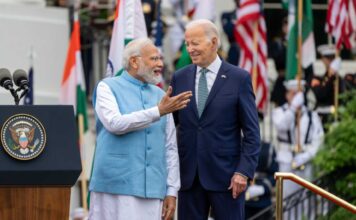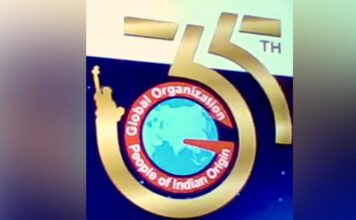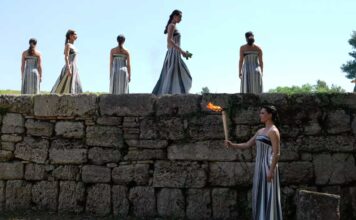10 Places Every American Should See in USA
Think you know America’s essential sights? Compare your past trips with our picks for 10 domestic destinations every citizen should visit—from pop culture icons to patriotic landmarks. Consider it your star-spangled bucket list.
What makes a place essentially American? Besides being between our borders, of course? When the USA TV NEWS Editors set out to compile a list of 20 can’t-miss destinations in the United States, we knew there was no one right answer. A place couldn’t be just historic, or only very beautiful, or merely iconic. But in the best cases, it might be all three. For days (and weeks), ideas were floated, debates were had, some favorites were voted down and others prevailed. The list we arrived at is no American-history textbook quiz—although historic sites are there, along with a sampling of cultural, nostalgic, and guilty-pleasure spots that, we think, evoke the kaleidoscopic American experience. While our list is unranked, incomplete and inherently subjective, we think it is also diverse, surprising, and informative—and well worth keeping in mind as you plan your next vacation itinerary. So why not map out a detour to one of these spots the next time you hit the road? Who knows—you might never think of this country in quite the same way again.
Highway 1, Calif.
Considering that the United States has more miles of paved roads (over 2.7 million) than any other country on earth, is it any wonder that road trips are practically a rite of passage here? One of the most meditative—and celebrated—drives you can take in the States is the 145-mile stretch of California’s Pacific Highway 1 between San Luis Obispo and Monterey. Expect view after astonishing view of land meeting sea, as the road snakes and swerves high above the Pacific, past bright-green grasslands and redwood-forested canyons
French Quarter, New Orleans, La.
No other American neighborhood provides as much eye candy as the cobblestone streets of New Orleans’ French Quarter—known as “the Quarters” to locals—and we’re not referring to the annual Mardi Gras parades, with their thousands of taffeta-draped harlequins strutting to funk, R&B, and Dixie. No, it’s the architecture that’s intriguing. Stroll this district, which is bounded by the Mississippi River, Rampart Street and Canal and Esplanade, and you’ll glimpse nightclubs lit up in neon, French colonial townhouses draped in ivy, Creole cottages built on stilts, and antebellum mansions whose balconies are laced with intricate ironwork. The neighborhood’s premiere event is the annual French Quarter Festival in April, which draws hundreds of thousands of listeners for a series of jazz performances, focusing more on up-and-coming artists than the better-known cross-town rival New Orleans Jazz & Heritage Festival
National Mall, Washington, D.C.
There’s no place in America where you get more historical bang for your buck than the National Mall—fitting, since two of its most famous memorials (to Lincoln and Jefferson) are stamped on our smallest coinage. This less-than-two-mile stretch of our capital city packs in those memorials, plus the Washington Monument, the Vietnam Veterans Memorial, and the new Martin Luther King Jr. Memorial, among others, and it’s lined with Smithsonian Institution museums—none of which cost a dime to enter. Even if politics leaves you cold, there’s sure to be something at one of the Smithsonian branches to get you going, whether it’s the astronaut ice cream sold in the gift shop at the National Air and Space Museum, the inaugural gowns of First Ladies on display in the National Museum of American History, or the 45-carat Hope Diamond gleaming in the Natural History Museum
Las Vegas Strip, Las Vegas, Nev.
Glass pyramids. Faux Venetian canals. The 1,148-foot tall Stratosphere Tower. A couple of $100 million daredevil circuses called Cirque du Soleil. They’re all part of this neon-lit desert outpost 300 miles from Los Angeles—with a magnetic pull like no other. Every American ends up on the Strip sooner or later, whether for a bachelor party, a girlfriend getaway, a trade show, or simply lured by a shockingly cheap hotel-and-airfare deal. It’s the place Americans go to let their hair down (and, okay, gamble). Aside from its new $2.4 billion airport terminal, Vegas’s latest attraction is the Mob Museum (a.k.a., the National Museum of Organized Crime and Law Enforcement), a tribute to the mafia in real life and in pop culture that opened in February 2012. Interactive exhibits are plentiful: Be ready to pose for a police line-up shot
Yellowstone National Park, Wyo.
Wide-open space is a unique inheritance for every American, and Yellowstone is the most dramatic example of what “wide-open space” really means. In 1872, two-million-acre Yellowstone debuted as America’s first national park, and visitors began flocking to soak in its hot springs, see elk and bison roam its grasslands, gawk at its geyser known as Old Faithful, and hear gray wolves sound chill-inducing howls at dawn. Amazingly, visitors can get the same thrills today for nearly no cost. For the fullest experience, stay the night. The lack of light pollution in northwest Wyoming’s Big Sky country reveals an astonishing canopy of stars that is virtually unchanged from the time of native tribes, fur trappers, and pioneer explorers
20 Places Every American Should See
7/18/2012 — By Sean O’Neill
Golden Gate Bridge
Francesco Carucci / Dreamstime.com
The Golden Gate Bridge in San Francisco, Calif.
Think you know America’s essential sights? Compare your past trips with our picks for 20 domestic destinations every citizen should visit—from pop culture icons to patriotic landmarks. Consider it your star-spangled bucket list.
What makes a place essentially American? Besides being between our borders, of course? When the Budget Travel editors set out to compile a list of 20 can’t-miss destinations in the United States, we knew there was no one right answer. A place couldn’t be just historic, or only very beautiful, or merely iconic. But in the best cases, it might be all three. For days (and weeks), ideas were floated, debates were had, some favorites were voted down and others prevailed. The list we arrived at is no American-history textbook quiz—although historic sites are there, along with a sampling of cultural, nostalgic, and guilty-pleasure spots that, we think, evoke the kaleidoscopic American experience. While our list is unranked, incomplete and inherently subjective, we think it is also diverse, surprising, and informative—and well worth keeping in mind as you plan your next vacation itinerary. So why not map out a detour to one of these spots the next time you hit the road? Who knows—you might never think of this country in quite the same way again.
See our slideshow of 20 great American places
Highway 1, Calif.
Considering that the United States has more miles of paved roads (over 2.7 million) than any other country on earth, is it any wonder that road trips are practically a rite of passage here? One of the most meditative—and celebrated—drives you can take in the States is the 145-mile stretch of California’s Pacific Highway 1 between San Luis Obispo and Monterey. Expect view after astonishing view of land meeting sea, as the road snakes and swerves high above the Pacific, past bright-green grasslands and redwood-forested canyons (byways.org).
Photo op:About two hours north of Monterey, Highway 1 crosses San Francisco’s Golden Gate Bridge, a 75-year old marvel of engineering and aesthetics. If the bridge is totally obscured by fog, you can fake your Kodak moment in front of the giant photomontage at the bridge pavilion’s new visitor’s center.
Insider tip: Take a detour near San Simeon to see the mansion of William Randolph Hearst, the eccentric newspaper magnate made famous by Citizen Kane (750 Hearst Castle Rd., hearstcastle.org, tours from $25).
French Quarter, New Orleans, La.
No other American neighborhood provides as much eye candy as the cobblestone streets of New Orleans’ French Quarter—known as “the Quarters” to locals—and we’re not referring to the annual Mardi Gras parades, with their thousands of taffeta-draped harlequins strutting to funk, R&B, and Dixie. No, it’s the architecture that’s intriguing. Stroll this district, which is bounded by the Mississippi River, Rampart Street and Canal and Esplanade, and you’ll glimpse nightclubs lit up in neon, French colonial townhouses draped in ivy, Creole cottages built on stilts, and antebellum mansions whose balconies are laced with intricate ironwork. The neighborhood’s premiere event is the annual French Quarter Festival in April, which draws hundreds of thousands of listeners for a series of jazz performances, focusing more on up-and-coming artists than the better-known cross-town rival New Orleans Jazz & Heritage Festival (neworleansonline.com).
Photo op: Jackson Square, a patch of moss-bearded oaks in the core of the French Quarter, is home to a striking statue of Andrew Jackson, the Renaissance- and Spanish Colonial-style St. Louis Cathedral, and Cafe Du Monde, which serves the city’s signature beignets (fried dough treats).
Insider’s tip: The visitor’s center at New Orleans Jazz Historical Park offers free self-guided audio tours of famous music institutions, such as a favorite venue of the late trumpeter Louis Armstrong, Preservation Hall No. 4, which re-opened last year after a six-year closure post-Katrina (nps.gov/jazz).
National Mall, Washington, D.C.
There’s no place in America where you get more historical bang for your buck than the National Mall—fitting, since two of its most famous memorials (to Lincoln and Jefferson) are stamped on our smallest coinage. This less-than-two-mile stretch of our capital city packs in those memorials, plus the Washington Monument, the Vietnam Veterans Memorial, and the new Martin Luther King Jr. Memorial, among others, and it’s lined with Smithsonian Institution museums—none of which cost a dime to enter. Even if politics leaves you cold, there’s sure to be something at one of the Smithsonian branches to get you going, whether it’s the astronaut ice cream sold in the gift shop at the National Air and Space Museum, the inaugural gowns of First Ladies on display in the National Museum of American History, or the 45-carat Hope Diamond gleaming in the Natural History Museum (nps.gov/nacc and si.edu).
Photo op: The P.O.V. rooftop bar at the W Hotel has the best view of the Mall in the city (515 15th St, NW; whotels.com).
Insider tip: The Mitsitam Native Foods Cafe in the National Museum of the American Indian has the most interesting food on the Mall. Try the pulled buffalo sandwich with chayote squash slaw and the cinnamon-and-honey fry bread (mitsitamcafe.com, sandwich $11.25, fry bread $3.35).
Las Vegas Strip, Las Vegas, Nev.
Glass pyramids. Faux Venetian canals. The 1,148-foot tall Stratosphere Tower. A couple of $100 million daredevil circuses called Cirque du Soleil. They’re all part of this neon-lit desert outpost 300 miles from Los Angeles—with a magnetic pull like no other. Every American ends up on the Strip sooner or later, whether for a bachelor party, a girlfriend getaway, a trade show, or simply lured by a shockingly cheap hotel-and-airfare deal. It’s the place Americans go to let their hair down (and, okay, gamble). Aside from its new $2.4 billion airport terminal, Vegas’s latest attraction is the Mob Museum (a.k.a., the National Museum of Organized Crime and Law Enforcement), a tribute to the mafia in real life and in pop culture that opened in February 2012. Interactive exhibits are plentiful: Be ready to pose for a police line-up shot (themobmuseum.org).
Photo op: For a sure bet on a clear view of the cityscape, head to the Ghostbar on top of the Palms Hotel and Spa (palms.com).
Insider tip: For a retro vibe, veer off the Strip to the hole-in-the-wall Champagnes Cafe, an old-school bar complete with blood-red wallpaper, bowls of mixed nuts, and a jukebox that plays Frank, Sammy, Dean, and Bing (3557 Maryland Parkway South; 702/737-1699).
Yellowstone National Park, Wyo.
Wide-open space is a unique inheritance for every American, and Yellowstone is the most dramatic example of what “wide-open space” really means. In 1872, two-million-acre Yellowstone debuted as America’s first national park, and visitors began flocking to soak in its hot springs, see elk and bison roam its grasslands, gawk at its geyser known as Old Faithful, and hear gray wolves sound chill-inducing howls at dawn. Amazingly, visitors can get the same thrills today for nearly no cost. For the fullest experience, stay the night. The lack of light pollution in northwest Wyoming’s Big Sky country reveals an astonishing canopy of stars that is virtually unchanged from the time of native tribes, fur trappers, and pioneer explorers (nps.gov/yell).
Photo op: Take the Lake Area Elephant Back Loop Trail for a vista encompassing Yellowstone Lake, the Absaroka Range, and the Pelican Valley.
Insider tip: Enter via the less-traveled Silver or East gates for more solitude on the park’s roughly 1,200 miles of trail.
Times Square, New York City
Sure, the crowds can be pushy, but Times Square—the stretch of Broadway between Manhattan’s 42nd and 47th streets—delivers the most intense straight-up celebration of round-the-clock visual stimulation in the free world. Three hundred sixty-five days a year, it’s all lights, cameras, and action. And in summer, when the city sets out a slew of lawn chairs in its pedestrian-only core, you can take a seat and gaze southward, imagining the scene every New Year’s Eve when a million revelers watch the ball drop—an all-American tradition for 105 years.
Nashville, Tenn.
Soaking up country music in its native habitat is an American music experience like no other. Leafy, laid-back Nashville, Tenn., deserves its nickname Music City U.S.A.: It’s dotted with twang-accented institutions, including the Country Music Hall of Fame, the Ryman Auditorium (with its famous acoustics), and the Grand Ole Opry, a weekly live-audience radio show that has been continuously broadcast since 1925. Go boot-scootin’ at one of the countless honky-tonks lining Broadway, where the line dancing is first-rate
Grand Canyon, Ariz.
Many American landmarks inspire people to think big, but none can match the leviathan scale of the Grand Canyon (nps.gov/grca). As with anything worthwhile, a mind-melting view of the fire-hued, half-mile-long rock faces at the Grand Canyon must be earned. Take a half-day or overnight mule trip, which involves a guided ride along the canyon rim and down to the Colorado River. Space is limited, so book ahead via Xanterra Parks & Resorts (xanterra.com, 888/297-2757), the operator that has the parks concession, or at the transportation desk in the lobby of Grand Canyon’s Bright Angel Lodge, on the South Rim (half-day rides $123, overnight trips $507 including cabin accommodation, breakfast, lunch, and a steak dinner). Your souvenir—aside from a newfound appreciation for more comfortable forms of transportation—will be the vivid sense of timelessness that you can only get from observing a geological wonder more than a million years in the making.
Hollywood Walk of Fame, Los Angeles, Calif.
In 2013, Helen Mirren, James Franco, Usher, Jennifer Hudson, Ron Howard, and another 19 actors and musicians will be added to the more than 2,400 celebrities who’ve left their handprints and bronze-engraved names in the pavement along Hollywood Boulevard and Vine Street since 1958. (We imagine tourists have been posing with their hands in their favorite stars’ prints for about that long, too.) Mercifully, reality TV stars are banned from the sidewalk showcase—only those who’ve read from a script can be included
Disney’s Magic Kingdom, Orlando, Fla.
Admire Cinderella’s Castle, watch Princess Jasmine hug small children, and listen to the animated model of Abe Lincoln talk in the Hall of Presidents. Those are typical items on the agenda at Disney World, the rare American tourist trap that’s worth the trip. Founder Walt Disney pioneered the use of technology to create enchanted moments that surpass the mere roll-into-town carnival. His handiwork is probably our nation’s most beloved contribution to global culture. After all, has anyone in the world never heard of Pirates of the Caribbean? We didn’t think so













